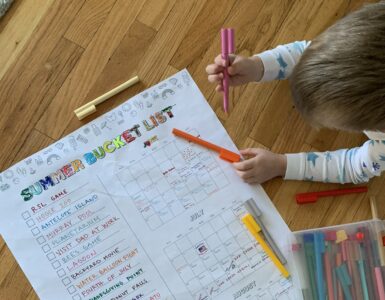Many family’s finances are suffering, and there is a lot of confusion going around! We found some answers to the most asked money questions.
Finances are suffering for families and businesses everywhere, and we all have a lot more questions than answers. Luckily, though, we found an expert who is in the know.
Amanda Christensen shares answers to the top five questions we all have about our money situation in these turbulent times.
- When will I receive my stimulus check?
This is the golden ticket question. The answer is: it depends. If you included your direct deposit information on your 2018 or 2019 federal tax return, then you may have received your stimulus check last week. The first checks were sent as early as April 9 via direct deposit. Check your bank account to learn if your deposit has arrived. Most direct deposits should have arrived last week (by April 14).
If you did not provide direct deposit information, the IRS will send you a paper stimulus check. The IRS will start sending paper stimulus checks beginning April 24. Each week, the IRS plans to send approximately 5 million paper stimulus checks, starting with taxpayers with the lowest adjusted gross income. If that stays true as announced, paper checks could take several months between May and September (depending on your adjusted gross income) to arrive.
More information here.
- Do I still have to make payments on my student loans?
From March 13 through September 30, 2020, the interest rate is set to 0% and payments are suspended for student loans owned by the federal government. Your federal student loan servicer will suspend all interest and payments without any action from you. These benefits, authorized by the CARES Act, do not apply to private student loans although many of those lenders are offering extended forbearance and other benefits. Contact your private loan servicer to find out more.
Expert Tip: if you are financially able to continue making payments on your student loans, any payments you make after March 13 can be applied directly to your principal balance. This will help you pay off your loans faster with even less interest.
More information here.
- What to do when my income drops?
A short-term loss of income can be devastating. There are steps you can take to look ahead and plan ways to weather the storm. Begin by inventorying your current resources and your expenses. Next brainstorm innovative ideas to help you temporarily simplify your lifestyle, decrease expenses, increase income, and consider available community resources. Finally, make a short-term plan with steps you can take today, this week, and this month based on your inventory list and brainstorm activity. Be sure to revise and maintain as needed making purposeful decisions to prioritize purchases as things stabilize. Download the FREE printable, worksheet that walks you through all of this at www.utahmoneymoms.com, a personal finance blog sponsored by USU Extension.
- How can I check the status of my Small Business Administration loan?
If you have been contacted by SBA that your loan application has been decisioned, then you may check the status of your Economic Injury Disaster Loan through disasterloan.sba.gov. Click “check status,” login, and follow the prompts. Be sure to check your email for updates as well. It is important to note that while the goal is get loans into the hands of small business owners as soon as possible, to date about 250K applications have been filed. In a typical year the SBA processes about 1K loan applications so it may take a bit.
More information here.
- Unsuccessful in the First Round of the Paycheck Protection Program?
If you weren’t successful with securing a loan in the initial wave of the Paycheck Protection Program, you still have options: EIDL, Payroll Tax Credits or Tax Deferrals, and a Traditional SBA Loan. However, congressional leaders are already in talks on reloading the PPP small business loan program. If you were on the fence and haven’t applied yet – apply now and secure your place in the queue. Even if it’s too late for round one, it appears that round two is imminent.
After details weren’t entirely clear in the first wave of applications, more clarity around PPP application items, including gross payroll calculations, the payroll measurement period, the loan forgiveness testing period and independent contractor spend is expected.
More information here.















Add comment